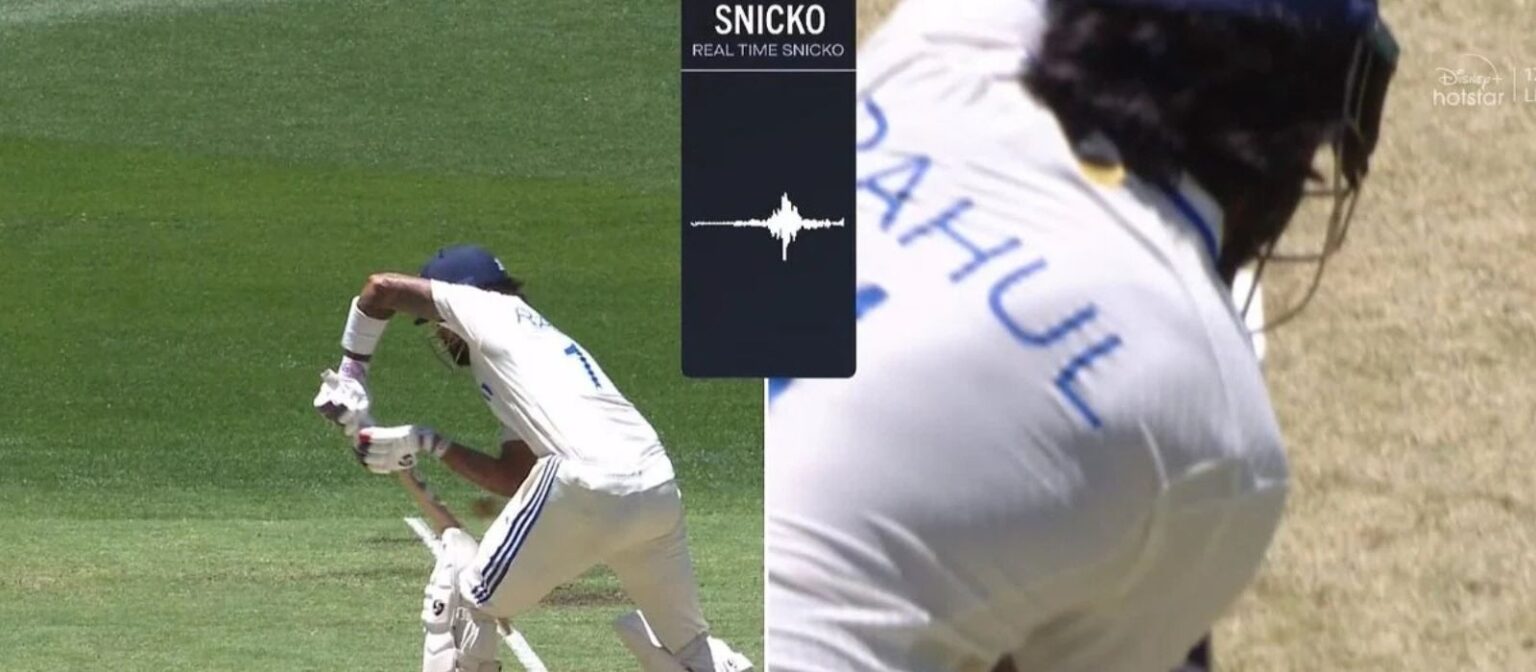
The ongoing India vs Australia Test series has once again given birth to a protracted debate after an unanticipated DRS review on Day 1 of the first Test in Perth. This incident concerned Indian opener KL Rahul, who once again became a victim of technology and the ‘umpire’s call’ that is making the headlines in cricketing circles. The match played at the Optus Stadium had its fair share of drama within the first few minutes of the first session as the Indians faced a daunting barrage of fast bowlers from Australia. The Border-Gavaskar Trophy, as ever, is a contest full of excitement, competitiveness, and once in a while, controversies.
KL Rahul was the most effective Indian batter during the first session, as he managed to defend himself while trembling at a score of 26 off 74 balls even when other batters in the list including Jaiswal, Padikkal, and Kohli who all perished for a total of 5 runs. Just when it seemed that the young Indian batter would not find himself at the center of attention any longer, a DRS controversy ruffled some feathers.
Facing left-arm seamer Mitchell Starc in the second over of the innings, KL Rahul was given out caught behind following an Australian review for an on-field ‘not out’ decision. The TV replays indicated a phantom spike on ultra-edge suggesting that the bat was hit by the ball. The replays also clear that the bat could have also touched the pad at the same time creating speculations of an inconclusive verdict on the evidence available.
Despite these uncertainties, the third umpire overturned the on-field umpire’s call, ruling Rahul out.
Rahul was clearly disillusioned as he exited the playground. He had a verbal confrontation with the field umpire for a few seconds, implying that the player’s bat and the ball were separated by a distance at the moment of the nick. He however further clarified that the UltraEdge spike could have also been caused by the bat hitting the pad, rather than the bat contacting the ball.
But, when it came down to the third umpire making a final call on the elimination, the batter only had hazy side-on angles as well as UltraEdge data to rely on for support and had to comply and walk back to the pavilion. With just the lunch break left, India found itself in a difficult situation at 47 for 4 wickets down.
The introduction of DRS (Decision Review System) was aimed at alleviating the problem of erroneous umpiring decisions. However, this system has often been a subject of controversy owing to its reliance on technology and subjective human interpretation. Rahul’s dismissal brings into focus certain critical issues about the system:
Former umpire Simon Taufel offered a technical perspective on the incident.
“We saw with that side-on shot there was a spike on RTS (Real-Time Snicko) with the bat away from the pad. Rolling it through naturally, you may have seen that second spike come through had it been rolled all the way.”
Taufel’s remarks suggest that additional evidence could have clarified the situation but was not considered by the third umpire.
The moment Klaussen took the wicket of Rahul, it was quite clear that this would turn out to be a key moment in the game and consequently left India in a delicate situation during the first session. During the course of the match played in Perth, which had bounce and pace, the loss of a set batter was an added disadvantage for the Indians. The Masked Warriors have represented several issues in this region where they have fought. The focus in this respect is on the decision-making process within the context of the Border-Gavaskar Trophy. For every given weight, the estimate influences the result of the match and series.
The India vs Australia Test match in Perth has again evoked controversies bordering the efficacy of the DRS system. When third umpire Rahul Riband ruled him out due to the available evidence, the decision was difficult but not impossible due to a definitive proof indiscernible. As the clash develops, this episode will in all probability be brought up again especially if the outcome is affected. For now, cricket fans and analysts are left wondering about the reliance on technology; especially at the critical junctures of the match.
Whether this controversy overshadows and distracts the rest of the series or remains a passing cloud in an epic battle, situations will dictate.
KL Rahul was ruled out based on UltraEdge evidence despite inconclusive visuals that suggested his bat may have struck the pad instead of the ball.
Critics argue that the evidence used to overturn the on-field umpire’s decision was not definitive, which goes against the principle of retaining the on-field decision when doubts remain.
Rahul’s dismissal left India struggling at 47 for 4, giving Australia a strong advantage in the opening session.
Simon Taufel suggested that rolling the footage forward might have shown whether the spike on UltraEdge coincided with the bat hitting the pad, potentially clarifying the situation.
